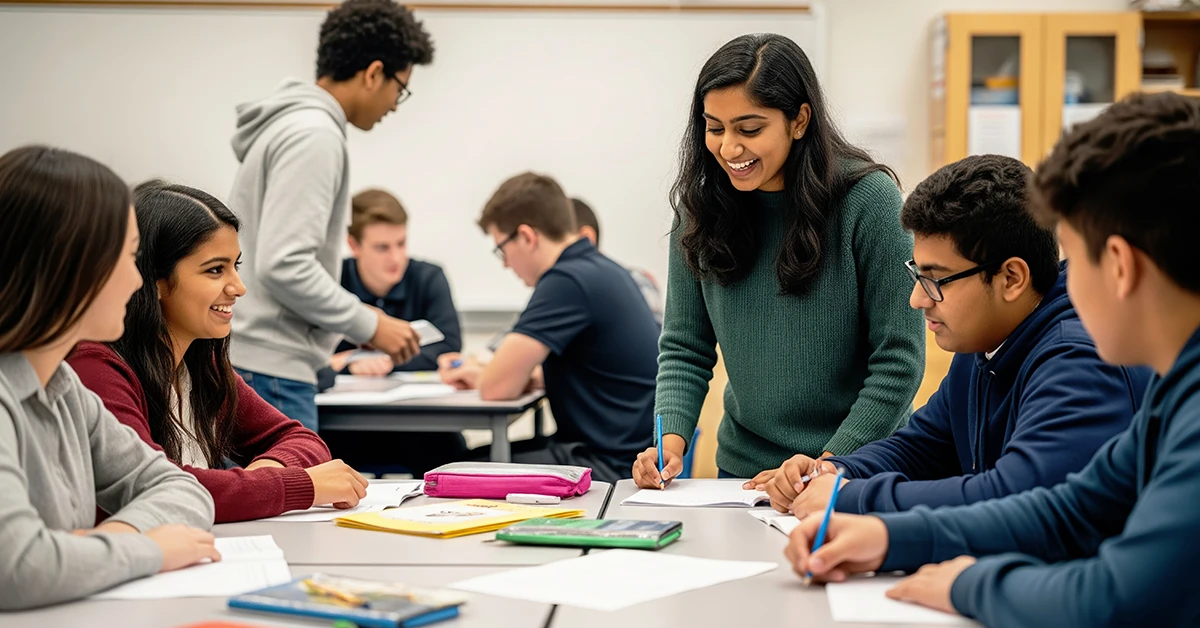Important SAT Update: Transition to Digital SAT
Effective December 3, 2023, the traditional paper-and-pencil format of the SAT has been discontinued. Starting in 2024, all students are required to take the Digital SAT, ushering in substantial changes in duration, format, material coverage, and question types. This shift to the Digital SAT represents a departure from traditional testing methods. It is crucial for students, educators, and test-takers to acquaint themselves with the new examination structure. Read more about the Digital SAT here.
Function questions ask you to look at the context of a word or phrase and decipher its effect on the passage. Note that these questions are not about the meaning of a word or phrase but their function within the text. These questions typically deal with small parts of a passage, but to fully understand the context of a given word or phrase for their function, you will want to understand the passage as a whole.
Examples
Function questions may look like this:
- The description of [something] in lines 6-11 serves to…
- The author uses the word _____ primarily to…
To start, figure out the order for reading and answering that works best for you.
This will depend on your reading strategy. When answering the various question types, you can strategize by mixing up the order you answer them.
If you skim the passage and then answer the questions, you can strategize by completing the big picture and little picture questions first, then completing the function questions. This is effective because if you skim through the passage, you will need to reread for more depth for the function questions. It is therefore wise to work through the questions you can answer by skimming alone first.
If you look at the questions first and then read the passage, you can strategize by understanding the text’s details before answering function questions. Consider completing little picture questions and words in context questions first to grasp the meanings and small details. The details can serve as helpful markers of contexts when deciphering functions later.
If you are a quick reader, you may choose to answer the questions in order. This strategy can be less confusing and more efficient, especially if you are strong in your reading comprehension skills.
After you have found an order that fits the best for you, you can use these strategies to simplify function questions.
Function questions are notorious for their confusing wording. This can affect your understanding of the question. It can also impact your impression of the answer choices.
Begin by figuring out what the question is asking. It is crucial to understand what a question asks of you, especially for these question types, which are often deliberately wordy and confusing. Try to simplify the questions down to find out what the phrase or word is doing in the context of the passage.
Think independently when deciding the function of a word or phrase. Another way to simplify the complicated wording of some function questions is to come up with an answer on your own before navigating confusing answer choices. Reading the choices before pausing to gather your thoughts or make a conclusion can muddle your interpretation of the word or phrase in question. This is not an accident: Do not let distracting wording trip you up; instead, take a moment to think of your answer to the question on your own. You can then compare your conclusion to the options available.
Once you understand the question and make your own conclusions, you can use surrounding contexts to find evidence for your answer. You can also use the process of elimination to solidify your choices and check your work.
Use the surrounding context
If you are stuck trying to figure out how a word or phrase functions in the text, it can help to take a look at the sentences or paragraphs around it. While the question may give you specific lines to work with, finding additional information may be necessary to answer the question. You can strategize by seeking information outside of the specified lines or words.
Process of elimination
Narrow down your answer choices by looking at the details in each option. If the function listed by an option is not in line with the text, eliminate it from your choices. This strategy is especially helpful while comparing the choices to the answer you created when thinking independently.
If you come up with a function for a word or phrase that does not match any of the choices, you will have to look at each option critically for its weaknesses and flaws in relation to functionality. When an answer choice properly describes the function of a word or phrase, it should be very clear.
As you prepare for the Reading section of the SAT® exam, consider implementing these strategies to improve your score.
You can track their effect on your performance using UWorld’s practice exams and the performance tracking tools in our SAT Prep course! Try each strategy individually and track its impact using the performance tracking tools across thousands of sample questions with detailed explanations.




